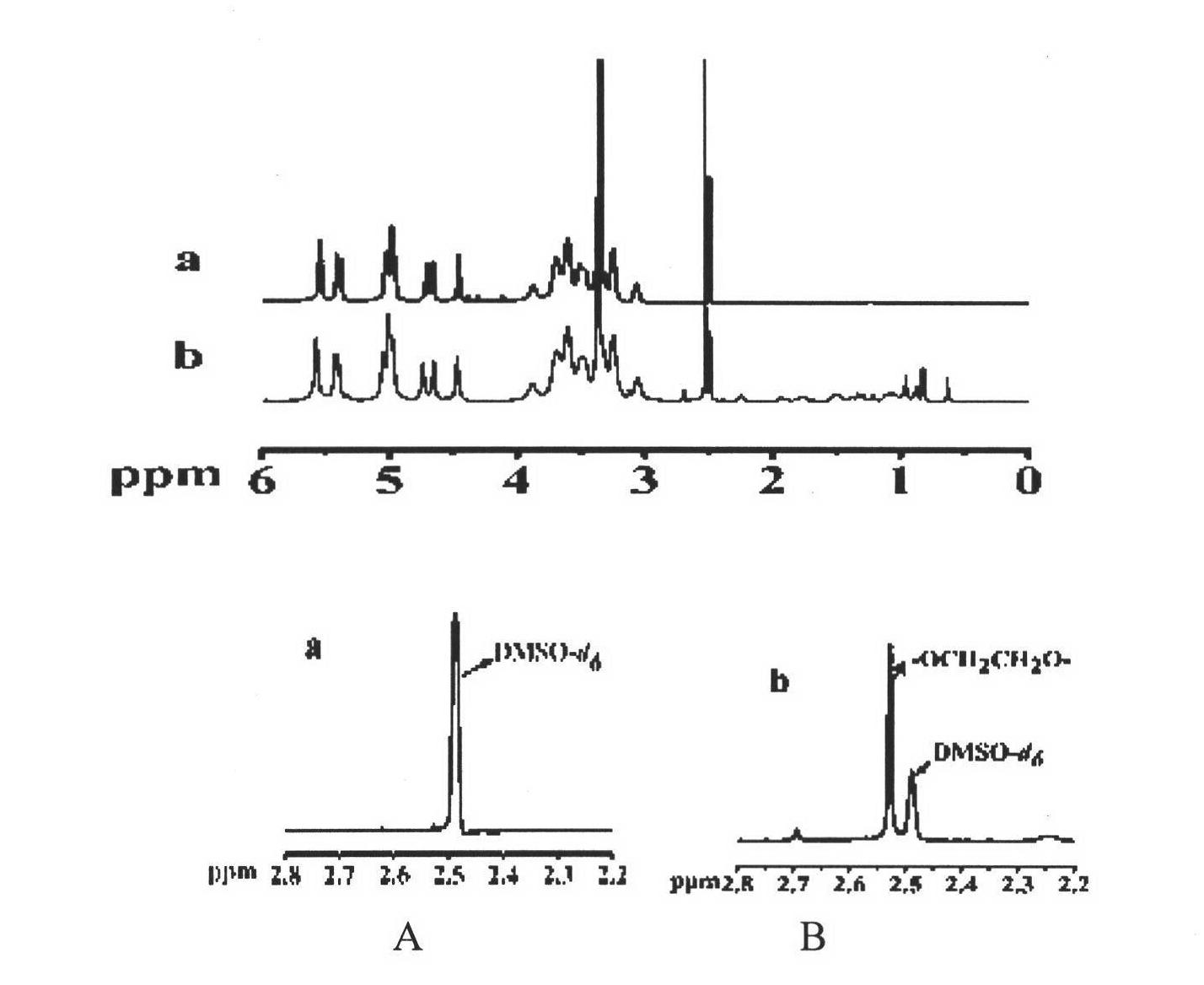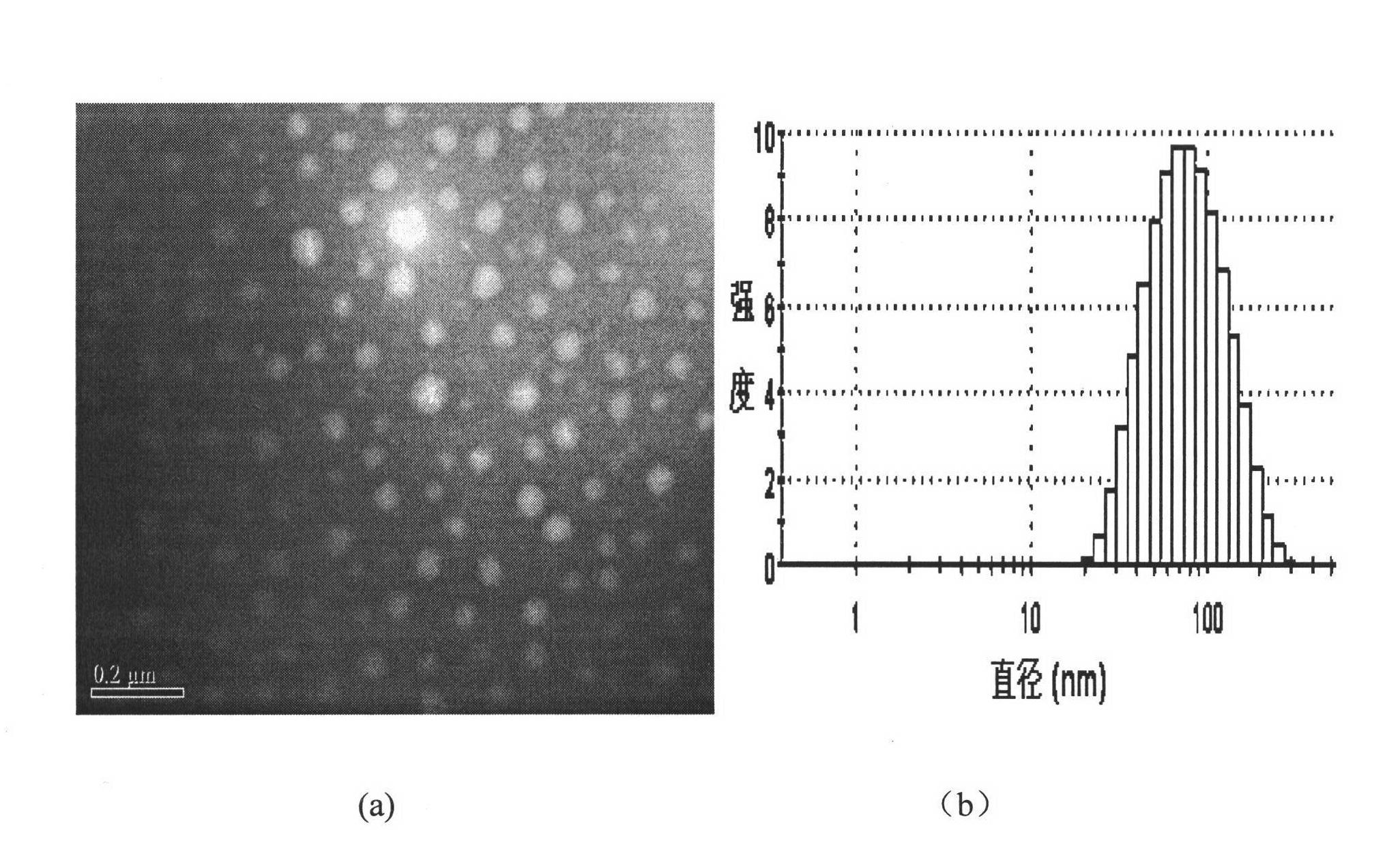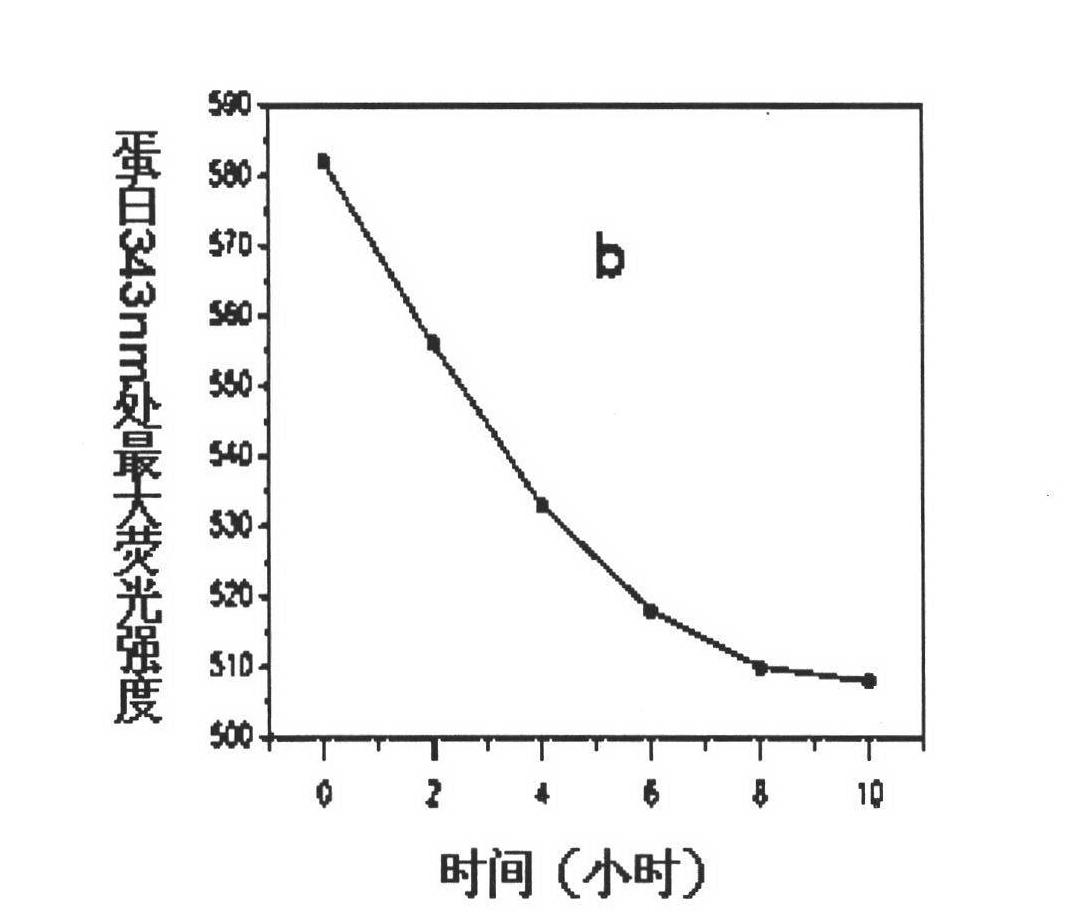Human serum albumin complex hydrophobically modified pullulan nanoparticles and preparation method thereof
A technology of human serum albumin and pullulan polysaccharide, which can be used in drug combinations, steroids, inactive components of polymer compounds, etc., can solve problems such as no literature reports, and achieve stable blood drug concentration and delayed release. Effect
- Summary
- Abstract
- Description
- Claims
- Application Information
AI Technical Summary
Problems solved by technology
Method used
Image
Examples
Embodiment 1
[0033] Example 1: Synthesis of cholesterol hydrophobically modified pullulan and calculation of degree of substitution
[0034]Dissolve 2.5g (6.5mmol) of cholesterol modification and 2.0g (20mmol) of succinic anhydride in 20mL of anhydrous pyridine, react at room temperature for 48h, stop the reaction, drop the reaction solution into glacial hydrochloric acid solution with pH=1~2, and precipitate White flocculent precipitate. Refrigerate for 16 hours, filter with suction, and collect the precipitate. The precipitate was washed with distilled water until pH>5, recrystallized in ethyl acetate / ethanol, and dried at 80°C to obtain 2.0 g of pure white needle-like succinylcholesterol (CHS).
[0035] Take 0.5g of a pullulan sample and dissolve it in 15ml of dehydrated dimethyl sulfoxide for subsequent use; take succinylcholesterol (CHS), 4-lutidine (DMAP / CHS=1, mmol / m mol) , (EDC / CHS=1.2, mmol / mmol), dissolved in 10ml DMSO, stirred at room temperature, and activated for 1h, the act...
Embodiment 2
[0038] Example 2: Preparation method and characterization of cholesterol hydrophobically modified pullulan nanoparticles
[0039] Take 20 mg of each CHP polymer and add 1 mL of DMSO solvent to dissolve. The solution was transferred into a dialysis bag, put into 3L distilled water, changed the water every 8 hours, dialyzed for 48 hours, and dialyzed the DMSO clean. After the dialysis, the volume was constant, 100W power ultrasonic for 10s, and filtered with a 0.45μm microporous membrane. figure 2 It shows that under dynamic light scattering, the CHP nanoparticles present a unimodal distribution with a particle size of about 100nm. Samples were prepared on a copper grid, stained with 2% phosphopentanoic acid, and the morphology of the nanoparticles was spherical in TEM observation. The particle size and Zeta potential of the nanoparticles were measured by dynamic light scattering, and the Zeta potential of the CHP nanoparticles was about -3mV.
Embodiment 3
[0040] Example 3: Determination of changes in the fluorescence intensity of nanoparticles and proteins complexed and changes in the secondary structure of proteins
[0041] CHP nanoparticles were mixed with human serum albumin, and HSA nanoparticles were set as a blank control group with the same protein concentration. A fluorescence spectrophotometer was used to measure the fluorescence spectra of the two, and the excitation wavenumber was set to 275nm, and the emission wavenumber was set to 287-345nm. The mixed solution was inserted into a 2ml EP tube, and then the mixed solution was placed in a shaker at 37° C. with a rotational speed of 20 rpm for 10 h. The samples were taken out every 2 hours, and the fluorescence intensity of all the samples was recorded in the above-mentioned manner, and the maximum fluorescence intensity was taken to determine the time when the protein and the nanometer complexed completely. The circular dichroism spectrophotometer measures the circul...
PUM
| Property | Measurement | Unit |
|---|---|---|
| particle diameter | aaaaa | aaaaa |
| molecular weight | aaaaa | aaaaa |
| particle diameter | aaaaa | aaaaa |
Abstract
Description
Claims
Application Information
 Login to View More
Login to View More - R&D
- Intellectual Property
- Life Sciences
- Materials
- Tech Scout
- Unparalleled Data Quality
- Higher Quality Content
- 60% Fewer Hallucinations
Browse by: Latest US Patents, China's latest patents, Technical Efficacy Thesaurus, Application Domain, Technology Topic, Popular Technical Reports.
© 2025 PatSnap. All rights reserved.Legal|Privacy policy|Modern Slavery Act Transparency Statement|Sitemap|About US| Contact US: help@patsnap.com



